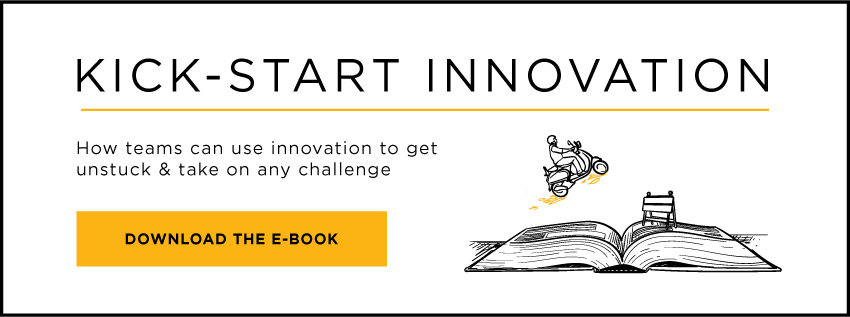When I work with executives in large companies, the most common feedback I hear is that they don’t have time for design thinking. Going through the process of observing customers, brainstorming ideas, building prototypes, then going back to customers to see how they respond initially sounds like an unreasonable request when teams face short deadlines and pressure to be first to market.
My response is always a version of the following: “It doesn’t matter how fast you get an idea to market, if it’s the wrong idea or if it’s based on the wrong assumptions, it’s going to fail.” It may sound like a cliché, but it happens all the time. Companies are so eager to build a new product that they never take the time to validate whether it’s something the customers even want.
I recently led an ExperienceInnovationTM Apply session at a large automotive company. In these sessions, we built the program around a specific business problem the company is trying to solve. This team had spent the previous six months revamping their customer experience platform to better serve customers who needed their vehicles serviced, but they were struggling to gain traction with the project.
After a day of learning the basics of the design thinking process, we sent them out to conduct field engagements as part of the workshop process.
Research Not “Me-Search”
One team spent time at a dealership to understand the customer journey in addressing their service needs. Going into these discussions, the team assumed the feedback would help them hone their platform interface. Instead, they discovered that the very premise for their project was completely wrong.
They built the entire concept around the assumption that customers in need of post-sales support would look to the manufacturer directly, and they had been redesigning their portal to accommodate that experience. In less than an hour of observation and conversation they discovered that customers almost always go to their dealers — not the manufacturer — when they need help.
When they returned to the workshop with this information, the senior leader on the team was both distraught that they had wasted so much time; and relieved that they finally understood what they were doing wrong. They immediately went back to the drawing board to consider what role they can play in supporting dealers when customers come to them for help.
“Before this workshop,” he said, “our response to this kind of a problem would have been to assume the customer was wrong and to focus on how to change their behavior so they would come to our portal and use it as we intended them to.” However, having now experienced the value of actually talking to the customer, he realized that the right approach was to respond to the customer’s preferences not to try to change them.
This story is exactly why companies should always make time for design thinking. This team spent six months and lots of money designing a project that was never going to work. After spending less than an hour with end users they not only realized the giant error they made, but got the information they needed to pursue a solution that would add value.
As this leader pointed out, companies are often a lot better at “me-search” than research. They assume past successes and experts on the team are all they need to know what the customer needs. This team learned the hard way that making a little extra time to work with customers is the fastest and most cost-effective way to ensure the idea you have will meet their needs.
Learn how to enable innovation skill-building at scale or download our free ebook Kickstart Innovation: A Guide for Organizations.
Keith LaPlante is a Master Facilitator at ExperiencePoint. Keith leverages 22 years of experience in financial services along with a decade of service in the Royal Canadian Navy to design and deliver working models, design sprints, change interventions and training programs to develop and apply user-centric problem-solving approaches and solutions. Keith has worked with global organizations including JP Morgan, Microsoft, Citigroup, Coca-Cola, Visa, Standard & Poors, AAA and The Ford Motor Company. He has also taught executives at leading universities, including Harvard Business School, the University of North Carolina and Duke University.
